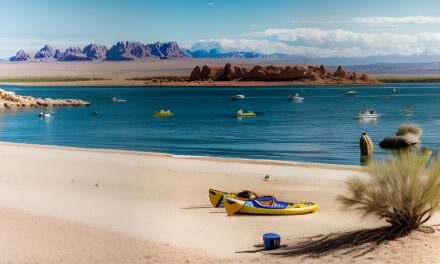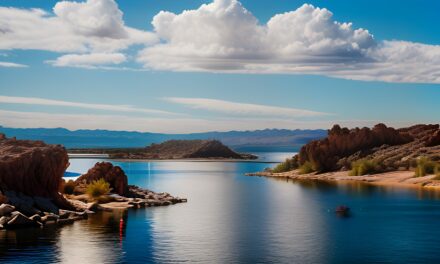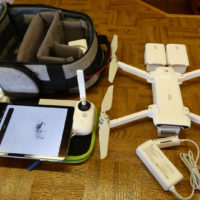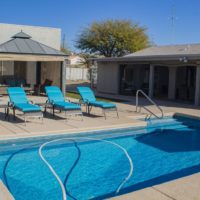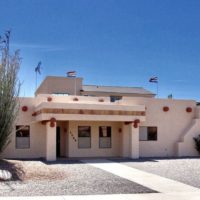Santo State Historic Site will celebrate the completion of more than
two years of painstaking work to make much-needed repairs to the 1700s
Spanish mission grounds and buildings.
– Lake Havasu
The approximately $850,000 Goliad repair project was funded through
Proposition 8, a bond package approved by Texas voters in 2001 that
provided $101 million over 10 years to improve or repair Texas Parks
and Wildlife Department state parks, wildlife management areas, fish
hatcheries and other facilities.
The multi-year Goliad restoration project was needed to stem the
tide of physical deterioration that was threatening to undermine its
continued viability as a place where Texans can reconnect with the
past. In recent years, leaky roofs and flooding on the grounds have
seriously threatened park structures.
A diverse team of artists, architects, historians, and craftsmen
skilled in historic restoration collaborated to identify problem areas
and set a course of action. The project was managed by Laura David with
the TPWD Infrastructure Division. The roofing and electrical work was
awarded to Kellogg, Brown and Root under a “job order contract,” a
unique arrangement that improved quality control and kept costs down. A
TPWD “Force Account” construction crew of historically trained
craftsmen led by Mark Lenoch did the painstaking job of plastering,
painting, wood repairs, stonework and site improvements.
Workers put in new roofs and electrical wiring for all the mission
buildings. They patched exterior plaster and repainted the chapel and
granary buildings. They restored the chapel interior, including
repainting frescos and decorative elements, with work overseen by Nola
Davis, the same TPWD artist who created them 28 years ago.
As part of the restoration, the grounds were excavated and French
drains were installed to prevent flooding using Texas Department of
Criminal Justice inmate labor. Ramps and other improvements were also
added to make the entire park wheelchair-accessible.
“Basically if you were here last year and you came this year, you’d
see a totally new face; it’s been put back to what it should be,” said
Mary Livingston, Goliad State Park complex historic sites manager. “It
is absolutely amazing. Between Texas Parks and Wildlife staff and the
contractors that were hired the quality of work was phenomenal.”
At 11 a.m. on Friday, June 16, state and local officials, including
Rep. Yvonne Gonzalez-Toureilles, will take part in a celebration hosted
by the Amigos of Goliad State Park to mark completion of the
restoration effort. Afterward, park employees will lead tours to
showcase the restoration process.
Goliad State Park actually includes several historic sites in
different locations–the central mission and state park complex closer
to Goliad, the ruins of Mission Rosario, the Fannin Battleground and
Zaragoza Birthplace south of town in the community of La Bahia–all of
which were improved as part of the project. This includes a restored
centennial pavilion to mark the Battle of Coleto Creek at the Fannin
Battleground and the entire floor replaced in the small museum at the
Zaragoza Birthplace.
Mission Espíritu Santo is similar to other Spanish missions in
Texas, such as the one known as the Alamo in San Antonio. A unique
feature is that Goliad is considered by many to be the birthplace of
cattle ranching. In its heyday, the mission ran 40,000 head of cattle
on about a million acres. It was also the last mission to close its
doors in what we know as present day Texas.
Espíritu Santo was originally located at Matagorda Bay in 1722. This
site was abandoned and the mission was rebuilt near what is now
Victoria until 1749, when it was moved permanently to Goliad. By 1830,
it was falling into decrepit disrepair. Some 100 years later, help
arrived in the form of the Civilian Conservation Corps. In the 1930s,
after extensive research, the CCC built reconstructions of the chapel,
granary, and workshop placed on the original foundations. One room off
the side of the granary dates to the 1700s, where visitors can see the
original architecture.
Besides historic interpretation, the park has recreational
facilities and is popular for camping, fishing and picnicking.
Amenities include 20 water/electric pull through sites for recreational
vehicles, five screened shelters, a group camping area with
water/electric sites, and water/electric pads for tent camping.
The park has miles of San Antonio River frontage and visitors can
fish from the shoreline. There is a picnicking area plus 1.5 miles of
hiking trails and another 2.5 mile hike/bike trail that extends to
downtown Goliad and Presidio La Bahia, the Spanish colonial fort
established alongside the mission.
Starting July 1, an exhibit will debut celebrating the 75th
anniversary of the creation of Goliad State Park. Exhibit panels,
photos and displays will take visitors through time in all the mission
buildings, leading from the chapel to the granary to the workshop.
“It will be like they just walked off a work site,” said Livingston,
referring to exhibits showing how CCC workers reconstructed the mission.
Goliad State Park is open seven days a week. Entrance fees are $2
per adult, free for children ages 12 and under. The park is located
west of Victoria on U.S. Highway 183 just south of the town of Goliad.
For details, see the park Web site.
– Lake Havasu




